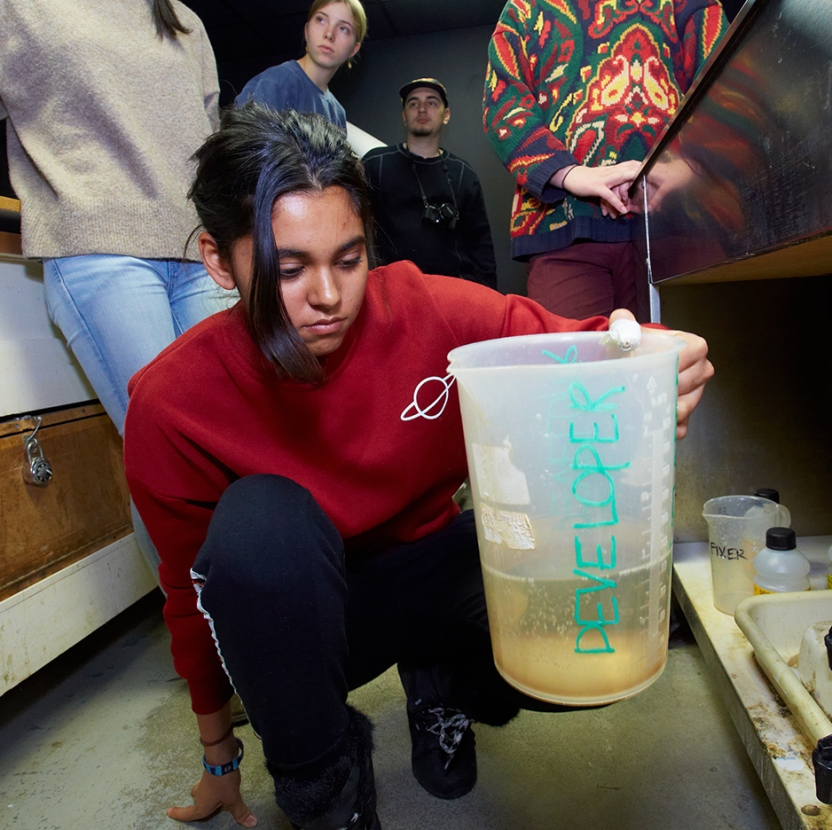J-Term Scenes: Students Embrace the Slower Craft of Darkroom Photography

MIDDLEBURY, Vt. – Passing by the kitchen and laundry room in the basement of Forest Hall, it would be easy to breeze by the unremarkable brown door. But for the students in a winter-term photography workshop, the door brings them a world away, to an old-school photo lab and darkroom, where they are learning what some consider a vintage craft.
“There is something that feels magical about film,” said David Sanders ’20, a Texas native who currently comanages the student-run darkroom and teaches the workshop. “You click the shutter, instantly the light hits the film, and that strip of plastic is transformed into something with imprints of the world on it.”
The workshop, which meets weekly in the evenings, walks students through all the basics of film photography, from loading a manual camera to developing the film and making prints. They also learn what goes on inside the single-lens reflex camera before they start snapping photos. Unlike digital photography, of course, there’s no checking the monitor on a film camera, which means a solid understanding of the process is essential.
[view:embed_content==610916]
“That makes you really careful about every picture you take because you only have 36 for a roll, and the film rolls are not cheap,” said Shirley (Qiongwen) Mao ’22, of Shanghai. Mao had a little previous experience with darkroom photography, but was grateful for Sanders’s patience and attention to detail—especially his advice on removing bubbles and water stains from the original film, which is crucial for high-quality printed images.
“I had no expectations other than seeing darkrooms in movies where the teenage high schoolers hang out,” said Emma Lodge ’19.5, a neuroscience major from Morrisville, Vermont. She had very little photography experience, but knew she wanted an arts experience for J-term.
“I never realized how much goes into developing photos. Getting close to my senior year, I kind of wanted to sit with moments for that long, and I want those moments to be something I have worked on, and to be something that I was intentional about and took care with,” said Lodge.
“It’s becoming cool to like old things again,” Grace Weissman ’21, a co-instructor for the workshop, says with a laugh. “There’s that nostalgia aspect to it, which I think is really fun. This is also a skill that people will be able to continue to use.”
Weissman, who lives in Takoma Park, Maryland, points out that darkroom work can offer a great reprieve from the stressors of daily life. “In this crazy world, it’s easy for our heads to be constantly spinning and thinking about new material and taking in all this information. But when you really slow things down and have something really tactile, it allows me to be creative in a different way and think about things a little bit more, which I really like.”
Sanders hopes his students will think differently about photography after the workshop is done. He says that, while he’s a fan of digital photography, the availability of a screen preview can shift a photographer’s emphasis from capturing a scene to perfecting the picture. “I think that working with film fosters the idea that I don’t have to be so precious with this particular shot—it comes out or it doesn’t. I can be more in the moment with it.”
With reporting by Qian Li ’19; Photos by Todd Balfour

